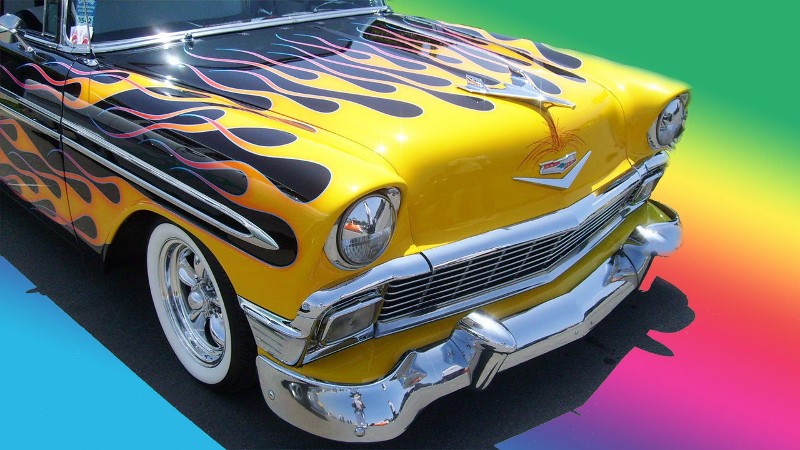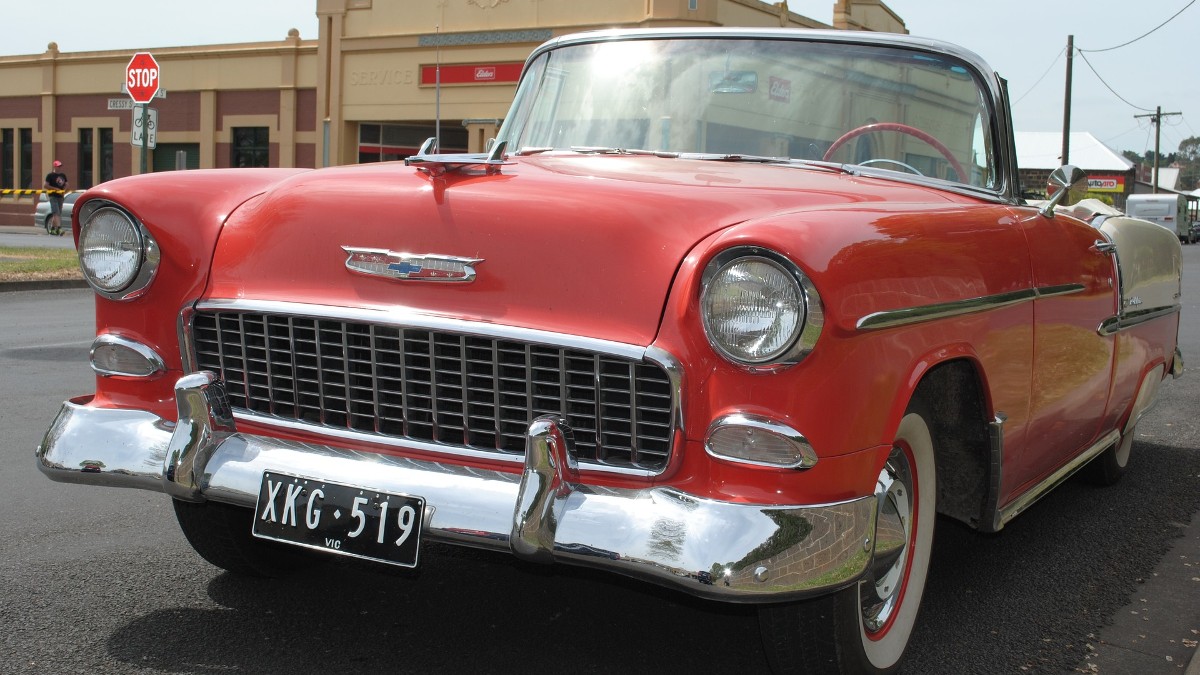The 55 and 56 are part of the Tri-Five Chevy. It’s a set of classic Chevrolet cars manufactured between 1955 to 1957. Each model has particular specs. If you’ve been wondering how the 55 and 56 differ, this article highlights their differences in design, speed, and power.
Both the 55 and 56 Chevy have a V8 engine. The 55 was officially released in 1955, while the 56 in 1956 with different features. They are part of the Tri-Five from Chevrolet. The 55 Chevy was a major success, with 1.7 units sold, and it inspired other brands.
Chevrolet manufactured the Tri-five cars in four main models: Bel Air, Nomad, and 210. The 1955 model was also known as the “shoebox” for its squared-off body. This was unique from other previous Chevy models.
What Is A 55 Chevy?
This Chevrolet car was introduced in the autumn of 1954 for 1955. It was a major turning point for the manufacturer to mark the first year of the Tri-Five. The car was a major success, and 1.8 million units were produced.
It also debuted the Chevy 265-V8 engine. The model was the second generation of the Bel Air, first introduced in 1950. It came with a new design earning the name the “hot one.” Apart from the engine, Bel Air also introduced air conditioning.
The 55 Chevy was available in body styles, including hardtop with a two-door or four-door. Other options included a four-door sedan, two-door convertible, and station wagon with two doors or four doors.
What is A 56 Chevy?
This was a car produced by Chevrolet in 1956 with a front-width bumper, a cap hidden behind the driver’s side tail lap, and new wheel openings. Its horsepower went up, and the V8 engine got oil filters.
Variants of this model included the 150 with the gold vinyl interior, stainless steel side moldings, and bright windshield trim. The 210 had new upholstery material, a passenger wagon, and different exterior trim. A Bel Air version had standard features and more exterior trim.

What Are The Differences Between A 55 And 56 Chevy?
Let’s look at the differences between the Chevy 55 and 56.
55 Vs. 56 Chevy: Design
Ed Cole, Chevrolet’s chief engineer, and his team of engineers and designers had a field day building the 55 Chevy. The car exudes self-confidence, all-around competence, and optimism. It came with a V8 engine to become one of America’s greatest cars.
This car has been an inspiration and a symbol of resilience and hard work for brands such as Apple. The vehicle holds over 1.7 million units contributing to Ford’s posting profit of over $1 billion in 1955 and paying over a billion in taxes.
Its size and packaging were just right, with sit-tall comfort, which was later matched by light trucks and SUVs. The car offered excellent handling and rode comfortably without marshmallow softness. Its trim size and not having long overhangs made parking effortless.
The Chevy 56 was first marketed as a 55 to capitalize on its success. These two cars resembled a new V8 engine and air conditioning. The 56 was a hybrid whose front resembled a Corvette while the rear looked like a station wagon. All had a chassis of a Bel Air sedan.
The 56 had a wrap-around windshield and a tailgate with chrome stripes. It also had gas caps hidden behind flip-down tail lights with padded dashboards. The 56 Chevy trended because of its sleek and shiny look, including the engine under the hood.
55 Vs. 56 Chevy: VIN
You can tell a 55 from a 56 Chevy by looking at the vehicle identification number (VIN). It’s visible through the windshield stamped on the dashboard on the driver’s side. It’s a 55 Chevy if the fourth digit is a 5. You can tell a 56 Chevy when the number is 6.
If you don’t get the luxury of standing next to someone’s vintage car, you can discern the VIN in the body styling.
55 Vs. 56 Chevy: Speed
The 1955 Chevy has a top speed ranging from 160 to 175 km/h. This is because of its heavy construction and abysmal aerodynamics. It completes ¼ mile in just 6.958 seconds with a top speed of 204.39 mph.
A 1956 Chevy has a 6.2 liter V8 engine. Only 3467 units of the 1956 Corvette were produced with two-speed and three-speed transmissions. It has a small block V8 engine for improved performance.
55 Vs. 56 Chevy: At a Glance
If a Bel Air whizzes by, look at the front grille and parking lights as it approaches and the taillights while it disappears. A 55 has the front grille below and between the headlights. The parking lights are mounted below the headlights in front of each fender.
The 56 has parking lights still mounted below the headlights. However, they are in the grille since it spans the front of the vehicle. Its taillights are smooth, with pointy tail light lenses having a bullet shape.
55 Vs. 56 Chevy: Other Differences
A Chevy 56 had a bumper with two teeth with parking lights on both sides. The 55 had a bumper without teeth and small oval-shaped parking lights. A 56 Chevy’s headlight lens extended further.
It also had more prolonged and pronounced fins on the rear than the 55. The hood of a 55 had more curves, while a 56 was straight without curves.
To wrap things up,
The 55 and 56 Chevy are part of the Tri-Five produced by Chevrolet from 1955 to 1957. Each model had distinct features. The manufacturer first made the 55 before producing the 56 the following year. Some of the differences are in the headlight lens and grille.

